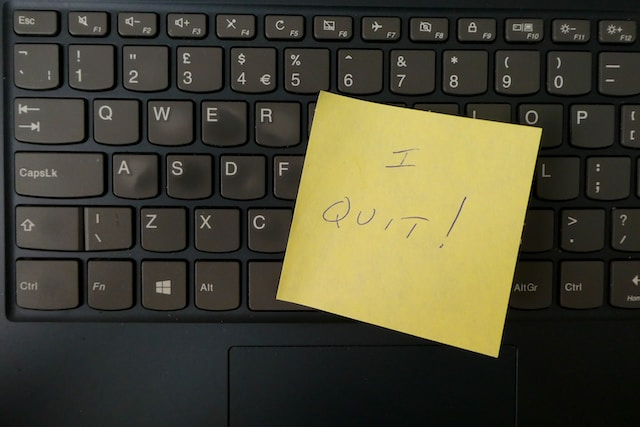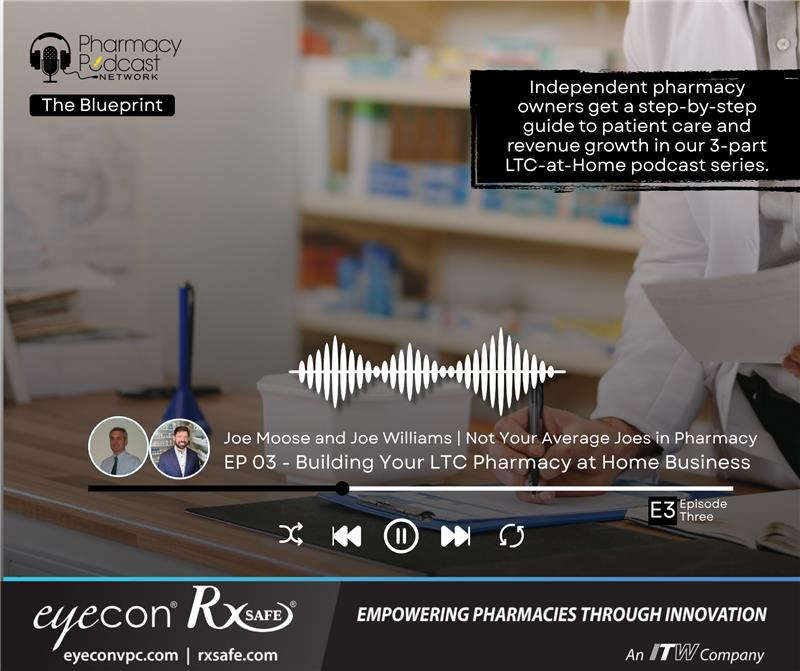After surviving the uncertainties of working during lockdowns, dealing with drug shortages and supply chain issues, and coping with increased demands on workers due to a scarcity of labor, the pharmacy industry seems to have weathered the worst of the storm.
But could an emerging workplace trend turn into another problem for pharmacy?
The trend is quiet quitting.

What is Quiet Quitting?
A Gallup poll in 2023 says that up to half of workers in the US are quiet quitting.
The term "quiet quitting," which first came to mainstream attention in 2022, refers to how some employees are just coasting at work, disengaged, without motivation, and doing just the bare minimum of their job requirements.
This trend is the opposite of the hustle culture mindset, which is based on the belief that you cannot achieve professional goals without working long hours and sacrificing self-care.
Putting work first and personal well-being second has increasingly been the norm in modern society. A global survey published in 2021 by the labor and employee performance research think tank, ADP Research Institute, showed that 1 in 10 employees have been putting in more than 20 hours of free work per week. The survey also found that employees were logging 9.2 hours of unpaid overtime weekly, an increase from 7.3 hours in 2020.
The Most Dependable Workers During a Crisis
Healthcare workers are known to be among the most dedicated and dependable. They demonstrated this reliability during the pandemic, meeting the challenges of their jobs under difficult and often deadly conditions while fighting a disease about which little was known.
Pharmacists have shown their willingness to go above and beyond to care for their patients, whether it was producing more hand sanitizers, providing education or community outreach, or simply fulfilling the grueling demands of their jobs without complaint.
But even with employees returning to work and unemployment rates across industry seeing an overall improvement, the reality is that employees now expect more balance in their careers, trading job security for more flexibility and control over their personal lives.
However, working under these adverse conditions exacerbated stress, burnout, and mental health issues, causing many workers to reevaluate their life priorities. In previous blogs, we discussed how overwork and understaffing could lead to severe consequences in employee performance and attitudes, including increased medication preparation errors, employee resentment, and general dissatisfaction among workers.
After The Great Resignation
There is no question that the pandemic caused unemployment rates to soar and generated a host of problems in the form of labor and materials shortages. Unemployment reached 14.7% in April 2020, a level not seen since The Great Depression. The rate has steadily fallen to a much lower 3.8% in February 2023.
But even with employees returning to work and unemployment rates across industry seeing an overall improvement, the reality is that employees now expect more balance in their careers, trading job security for more flexibility and control over their personal lives.
Some critics point out that the idea behind quiet quitting is not new. Many believe it is simply a new term for an old human resources problem – a lack of employee engagement.
What is Employee Engagement?
Employee engagement is how employees feel about their work and their company. Engagement influences their performance and commitment and can be critical to a company's success.
Employees who are 'engaged' are committed to a company and its goals.
The opposite is true when an employee is 'disengaged.' Disengaged employees have a negative opinion of their place of work, lack motivation for their position, and may be turnover risks.
Employee disengagement is caused by a perceived lack of meaning at work.
Why is This Change Significant?
Even during the worst times of the pandemic in 2020, employee engagement did not drop.
But a Gallup poll in 2021 found that employee engagement dropped for the first time in over a decade.
A sample of more than 50,000 full- and part-time employees showed that 34% of employees were engaged, and 16% were actively disengaged. However, in the previous year, 36% of employees were engaged, and only 14% were disengaged.
Healthcare showed the most significant decline in employee engagement, with engagement scores nine points lower than the previous year.
Having disengaged employees who quiet quit is bad enough in any industry. It costs the company time and money because of reduced productivity, profitability, and high turnover.
But in an essential industry such as healthcare, when engagement is low, quality of care and patient safety are at stake.
When employees in healthcare “quiet quit,” the burden falls on the engaged workers, who must take up the slack to compensate for decreased output.
In pharmacy, quiet quitting may result in many problems discussed in previous posts, including medication dispensing errors, pharmacy technicians cutting corners and sacrificing safety, and declining patient satisfaction.
How Do Managers Address Quiet Quitting?
How can managers address or identify the issue before it becomes a problem?
Pharmacy owners can take their cue from other healthcare industries in identifying quiet quitting before it becomes a problem and helping prevent it.
These strategies can include:
- Checking in on your staff regularly. If your employee's performance drops or a previously high-performing employee suddenly starts being unreliable, it may be a sign of quiet quitting. Having regular meetings and asking staff how they are doing is essential.
- Listening to employees. Concerns expressed by both managers, team leads, and other staff should not be brushed aside as being 'trivial' or 'irrelevant.' If an employee complains about something that negatively affects the carrying out of job responsibilities, empathizing may spell the difference between an employee who quiet quits and one who stays engaged.
- Keeping workload increases reasonable. Pharmacies are still understaffed. Expecting workers to take on extra shifts and responsibilities indefinitely without any negative consequences is unrealistic and dangerous.
- Compensating employees properly. Directly related to workloads and assuming extra responsibilities is rewarding employees properly. Equally important is recognizing employee efforts and their contributions to the whole team. Compensation can be in the form of monetary or non-monetary benefits such as flexible working arrangements, time off, professional development options, or bonuses.
- Supporting employee well-being. The physical and mental tolls of working long hours result in more stress in an already stressful and demanding workplace. Offering resources such as employee wellness programs, providing adequate break times, and encouraging preventive care can go a long way to keeping stress levels manageable.
While these suggestions are by no means exhaustive, and there is no guarantee that individual employees will respond the same way to these suggestions, managers and pharmacy owners should appreciate that the dynamic between employers and employees has evolved after the pandemic and that workers may now expect more from their employers.





.png)


